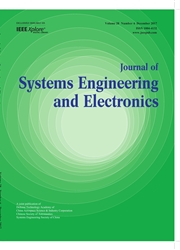

 中文摘要:
中文摘要:
A Bayesian method for estimating human error probability(HEP) is presented.The main idea of the method is incorporating human performance data into the HEP estimation process.By integrating human performance data and prior information about human performance together,a more accurate and specific HEP estimation can be achieved.For the time-unrelated task without rigorous time restriction,the HEP estimated by the common-used human reliability analysis(HRA) methods or expert judgments is collected as the source of prior information.And for the time-related task with rigorous time restriction,the human error is expressed as non-response making.Therefore,HEP is the time curve of non-response probability(NRP).The prior information is collected from system safety and reliability specifications or by expert judgments.The(joint) posterior distribution of HEP or NRP-related parameter(s) is constructed after prior information has been collected.Based on the posterior distribution,the point or interval estimation of HEP/NRP is obtained.Two illustrative examples are introduced to demonstrate the practicality of the aforementioned approach.
 英文摘要:
英文摘要:
A Bayesian method for estimating human error probability(HEP) is presented.The main idea of the method is incorporating human performance data into the HEP estimation process.By integrating human performance data and prior information about human performance together,a more accurate and specific HEP estimation can be achieved.For the time-unrelated task without rigorous time restriction,the HEP estimated by the common-used human reliability analysis(HRA) methods or expert judgments is collected as the source of prior information.And for the time-related task with rigorous time restriction,the human error is expressed as non-response making.Therefore,HEP is the time curve of non-response probability(NRP).The prior information is collected from system safety and reliability specifications or by expert judgments.The(joint) posterior distribution of HEP or NRP-related parameter(s) is constructed after prior information has been collected.Based on the posterior distribution,the point or interval estimation of HEP/NRP is obtained.Two illustrative examples are introduced to demonstrate the practicality of the aforementioned approach.
 同期刊论文项目
同期刊论文项目
 同项目期刊论文
同项目期刊论文
 期刊信息
期刊信息
